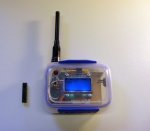Having successfully used the PICAXE for a number of model aircraft and rocketry projects it seemed logical to continue this approach when starting on a high altitude balloon (HAB) payload. However, on visiting http://ukhas.org.uk/ I was surprised at the dismissive comments about the PICAXE, with the majority of examples being aimed at the Arduino. Following a brief comparison between the two devices it was by no means obvious to me why they should have reached this conclusion.
Personally I find C++ to be rather verbose compared with PICAXE Basic, when for example implementing multiple serial ports with their own time-outs. Yes, Arduino does have lots of support libraries but then its not even possible to implement I2C without one. Unless you need the speed (and most HAB telemetry is only 50bps) or floating point maths, I would have thought the PICAXE was quite adequate for the task ( just look what sernet did with the $50 Satallite!).
Are there any Habbers out there that can provide examples of PICAXE based projects?
Personally I find C++ to be rather verbose compared with PICAXE Basic, when for example implementing multiple serial ports with their own time-outs. Yes, Arduino does have lots of support libraries but then its not even possible to implement I2C without one. Unless you need the speed (and most HAB telemetry is only 50bps) or floating point maths, I would have thought the PICAXE was quite adequate for the task ( just look what sernet did with the $50 Satallite!).
Are there any Habbers out there that can provide examples of PICAXE based projects?

